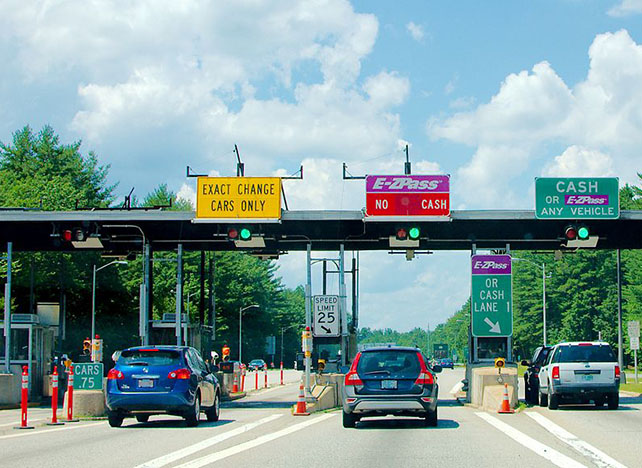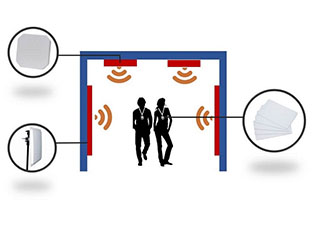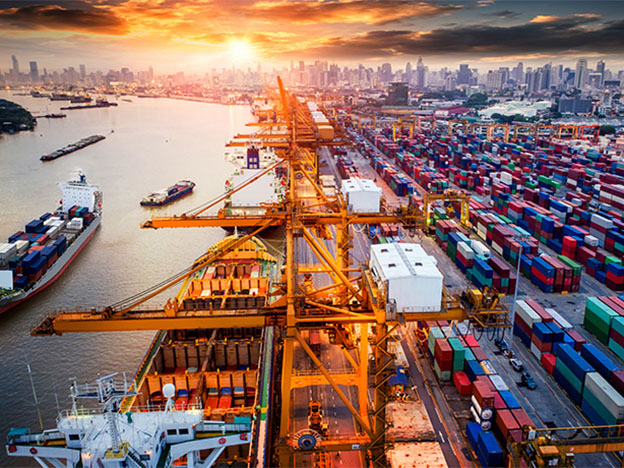 โทร :
+86 18681515767
โทร :
+86 18681515767
 อีเมล์ :
marketing@jtspeedwork.com
อีเมล์ :
marketing@jtspeedwork.com
 โทร :
+86 18681515767
โทร :
+86 18681515767
 อีเมล์ :
marketing@jtspeedwork.com
อีเมล์ :
marketing@jtspeedwork.com

01. ผลิตภัณฑ์ของเรา
ผลิตภัณฑ์ร้อนเซินเจิ้น jietong technology co., ltd. เป็น บริษัท เทคโนโลยีชั้นสูงที่มุ่งเน้นการพัฒนาการผลิตและการขายการระบุความถี่วิทยุ (rfid)
อีกขั้นหนึ่งเสมอ!
เซินเจิ้น Jietong เทคโนโลยี Co., Ltdเป็นบริษัทเทคโนโลยีสูงเน้น R&D การผลิต และการขายฮาร์ดแวร์ UHF RFID Jietong มีทีม R&D ของตัวเอง ซึ่งวิศวกรมีประสบการณ์ R&D มากกว่า 10 ปี เพื่อให้บริการและผลิตภัณฑ์ที่ดีที่สุดแก่ลูกค้า Jietong มีการพัฒนาอย่างต่อเนื่องเพื่อนำเสนอโซลูชั่นทั้งหมดสำหรับโครงการ บริการหลังการขาย และการสนับสนุนด้านเทคโนโลยี Jietong มีสายผลิตภัณฑ์หลักซึ่งรวมถึง เครื่องอ่านหลายแท็ก UHF RFID Impinj R2000 / TM200 , เครื่องอ่านแท็กเดี่ยว UHF RFID , เครื่องอ่านระยะไกล UHF RFID , เครื่องอ่านช่วงกลาง UHF RFID , เครื่องอ่าน / เขียนเดสก์ท็อป UHF RFID , โมดูลเครื่องอ่าน UHF RFID , เครื่องอ่าน UHF RFID แบบมือถือ, เสาอากาศ UHF RFID , การ์ดและแท็ก UHF RFID ฯลฯ Jietong มีหลักการของอำนาจสูงสุดของผู้ใช้ และขึ้นอยู่กับตลาดที่มุ่งเน้น เทคโนโลยีใหม่ และคุณภาพสูง เราจะจัดหาเทคโนโลยีล่าสุด ผลิตภัณฑ์ที่ดีที่สุด การแข่งขัน บริการด้วยความจริงใจแก่ลูกค้าของเรา เราได้สร้างชื่อเสียงให้ตนเองในฐานะส่วนหนึ่งของ ธุรกิจของลูกค้าและซัพพลายเออร์ที่น่าเชื่อถือ สร้างสรรค์ และไว้วางใจได้

02. ทำไมถึงเลือกพวกเรา
ข้อได้เปรียบของเราเซินเจิ้น jietong เทคโนโลยี co. Ltd. เป็น บริษัท เทคโนโลยีชั้นสูงที่มุ่งเน้นการวิจัยและพัฒนาการผลิตและการขายการระบุความถี่วิทยุ (rfid) ผู้เชี่ยวชาญพิเศษใน uhf rfid series reader ของ internet of things jietong มีทีม r & d ของตัวเองซึ่งวิศวกรมีประสบการณ์ด้าน r & d มากกว่า 10 ปี เพื่อให้บริการและผลิตภัณฑ์ที่ดีที่สุดแก่ลูกค้า jietong อยู่ระหว่างการพัฒนาอย่างต่อเนื่องเพื่อนำเสนอโซลูชันทั้งหมดสำหรับโครงการบริการหลังการขายและการสนับสนุนด้านเทคโนโลยีJietong มีสายผลิตภัณฑ์หลักซึ่งรวมถึงโมดูล uhf rfid, เครื่องอ่านมือถือ rfid, เครื่องอ่าน rfid ที่จอดรถ, เครื่องอ่าน rfid ช่วงกลางที่จอดรถ, เครื่องอ่านควบคุมการเข้าถึง uhf, เสาอากาศ uhf, การ์ด uhf และแท็กเป็นต้นเครื่องอ่าน rfid jt uhf ใช้แล้วในการจัดการยานพาหนะอย่างเข้มข้นการใช้สภาพแวดล้อมยังรวมถึงการจัดการพนักงานสำหรับโรงงานการจัดการน้ำหนักสำหรับคลังสินค้าการควบคุมการเข้าถึงคลังสินค้าและยานพาหนะการจัดการเสื้อผ้าการจัดการโลจิสติกส์ยาสูบการจัดการห้องสมุดอัจฉริยะการจัดการการระบุสายการผลิตสินทรัพย์ การจัดการ ฯลฯjietong มีหลักการสูงสุดของผู้ใช้และขึ้นอยู่กับตลาดที่มุ่งเน้นเทคโนโลยีใหม่และคุณภาพสูงเราจะจัดหาเทคโนโลยีล่าสุดผลิตภัณฑ์ที่ดีที่สุดการแข่งขันและบริการด้วยความจริงใจให้กับลูกค้าของเรา
03. กรณีโครงการ
โซลูชัน & กรณีหน้าโซลูชันนี้ช่วยลูกค้าแก้ปัญหาการติดตั้งและจัดการแอปพลิเคชันโดยใช้ผลิตภัณฑ์ของ Jietong Technology รวมรายการต่อไปนี้: การจัดการยานพาหนะ การจัดการระบบส่วนบุคคล UHF การจัดการสายการผลิต การจัดการโลจิสติกส์ การจัดการสินทรัพย์ การจัดการคลังสินค้า รถสุขาภิบาลสิ่งแวดล้อมจัดการ การจัดการตู้หนังสืออัจฉริยะ
RFID Technology in the Renewable Energy Sector: Applications and Opportunities 1. Introduction As the global renewable energy industry expands, efficient asset management, supply c...
อ่านเพิ่มเติม
การจัดการยานพาหนะด้วยการพัฒนาด้านการบำบัดรักษาของเศรษฐกิจจีนมาตรฐานการครองชีพของผู้คนก็เพิ่มขึ้นการเป็นเจ้าของรถทั้งหมดก็เริ่มเติบโตขึ้นอย่างรวดเร็ว ในปัจจุบันปัญหาในการจัดการยานพา...
อ่านเพิ่มเติม
ระบบจัดการบุคลากร uhf rfid>> ภาพรวมของระบบระบบการจัดการพนักงานบัตรทางไกลเป็นระบบการจัดการบุคลากรที่ทันสมัยโดยมีการรวมกันของเทคโนโลยี uhf rfid เทคโนโลยีอินเทอร์เน็ตและเทคโนโลยีแอปพล...
อ่านเพิ่มเติม
การจัดการสายการผลิตเพื่อให้ได้ผลิตภัณฑ์ที่มีคุณภาพดีขึ้นในขณะที่ลดต้นทุนการผลิตและเป็นไปตามข้อกำหนดของ iso9000 ผู้ผลิตจะติดตามข้อมูลผลิตภัณฑ์และกระบวนการควบคุมอย่างใกล้ชิดมากขึ้นซึ...
อ่านเพิ่มเติม
agv trolley track การจัดการคำแนะนำด้วยระดับการผลิตและความต้องการของลูกค้าที่เพิ่มขึ้นระบบโลจิสติกส์ที่หลากหลายกำลังเผชิญกับความท้าทายมากมายเช่นการปรับปรุงประสิทธิภาพของการหมุนเวียน...
อ่านเพิ่มเติม
ระบบการจัดการ rfid สินทรัพย์ภาพรวมของระบบวิธีการดำเนินการจัดการสินทรัพย์ด้วยตนเองรวมถึงการเพิ่มการกระจายการจัดเก็บการกำจัดและอื่น ๆ ไม่สามารถตอบสนองความต้องการได้อีกต่อไปสำหรับองค์...
อ่านเพิ่มเติม
04. เหตุการณ์
ข่าวล่าสุดเซินเจิ้น jietong technology co., ltd. เป็น บริษัท เทคโนโลยีชั้นสูงที่มุ่งเน้นการพัฒนาการผลิตและการขายการระบุความถี่วิทยุ (rfid)


05. ปรึกษาฟรี
ฝากข้อความหากคุณสนใจในผลิตภัณฑ์ของเราและต้องการทราบรายละเอียดเพิ่มเติมโปรดฝากข้อความไว้ที่นี่เราจะตอบกลับคุณโดยเร็วที่สุด

โทรศัพท์ : +86 18681515767
Whatsapp : +8618681515767

อีเมล์ : marketing@jtspeedwork.com

12/F, Building A, No. 6, Shiben Road, Shiyan Street, Bao'an District, Shenzhen, Guangdong, China-518108
ลิขสิทธิ์ © 2025 Shenzhen Jietong Technology Co.,Ltd. สงวนลิขสิทธิ์.

รองรับเครือข่าย ipv6